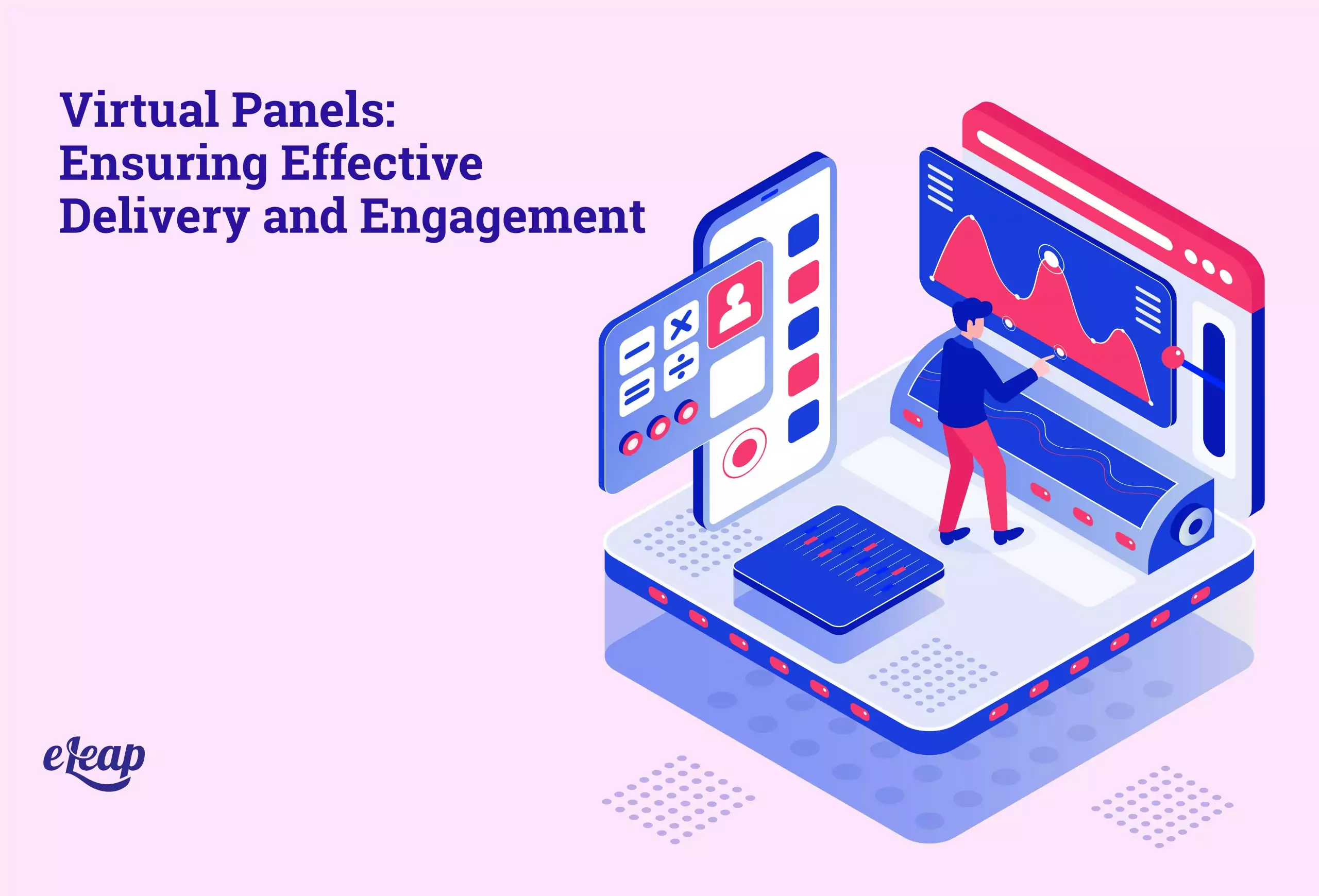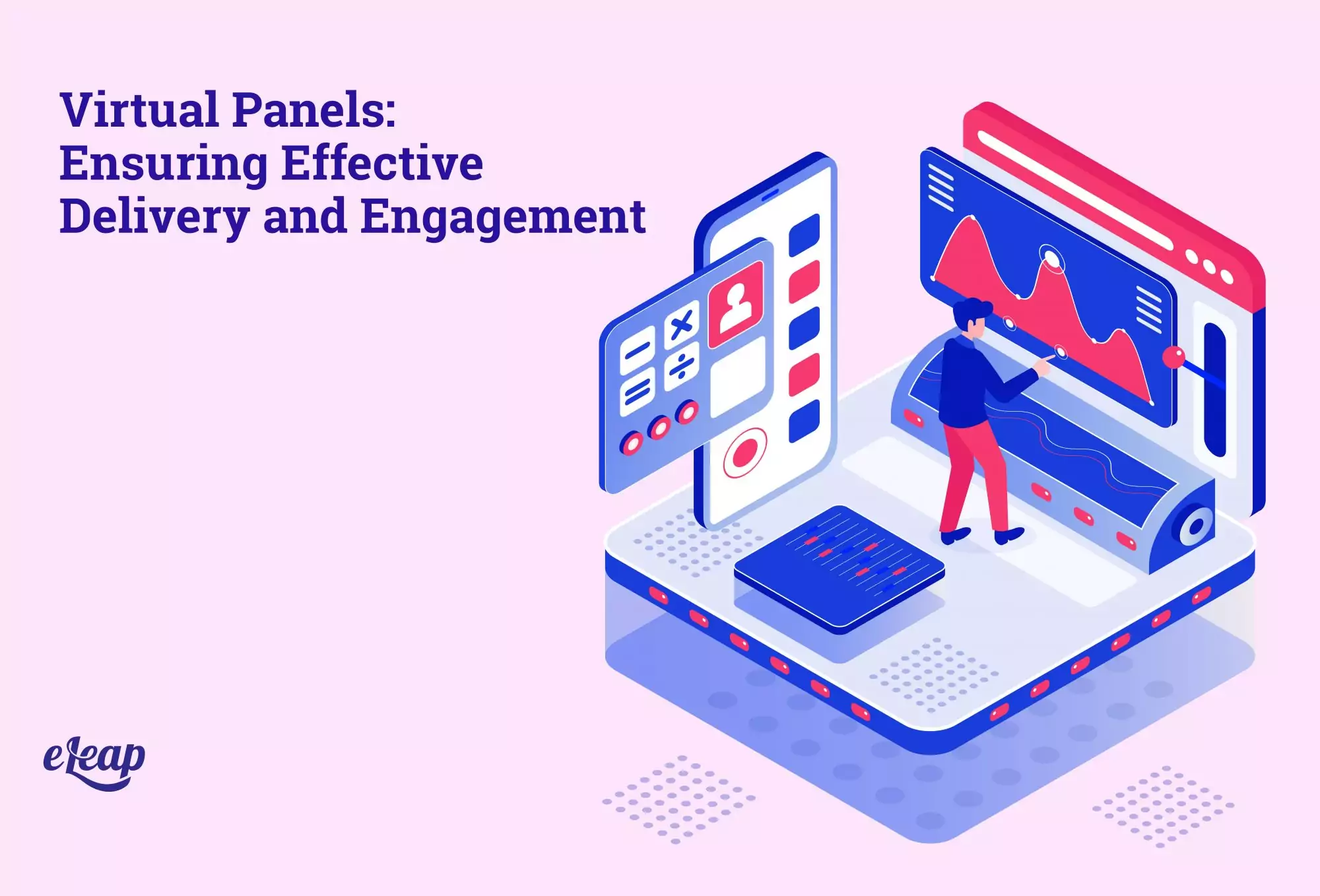Virtual Panels: Ensuring Effective Delivery and Engagement

The right learning management system (LMS) will help ensure that your learners are engaged and supported in their training and development journey. However, when it comes to virtual panels, introducing the human element can mean ambiguity – will it turn out dull and lifeless? Will your learners mentally check out during the panel? Will they actually retain the information being discussed?
These are all common questions that apply during in-person panels, but they’re doubly important in a virtual setting. In this guide, we will explore key ways to help ensure effective content delivery and boost engagement.

Why Does It Matter?
First, let’s address the elephant in the room. If you’re getting panelists together and providing a platform for them to address your learners, what more need you do? Isn’t that sufficient? In short, no.
To really understand the problem here, you must look at panels from a participant’s point of view. To many of your learners, virtual panels come across as a series of disconnected speeches. They have little, if anything, in common. The result is a disjointed experience that leaves participants bored, disengaged, and mentally checked-out.
The solution to this challenge is simple – use the following tips to create a more engaging, cohesive, positive experience. Doing so helps ensure that learners stay active and learning. Doing so will require some effort on your part (and on the part of the panelists), but it can be done.
For Panel Moderators
Most virtual panels are moderated. This individual will play a key role in creating a cohesive, engaging environment, even more than the panelists themselves. For moderators, the following things should be kept in mind.
The Audience Matters
First and foremost, you need to think about your audience. Who are they? Where are they listening from? What’s their reason for being in the panel? What experience do you want to impart to each audience member? How have their needs changed with the shift toward remote attendance?
Work with Panelists
Moderators need to work with panelists before the event. Even something as simple as a brief video chat can help lay some ground rules and impart critical information. You need to go over things like the narrative structure of the panel as a whole, the needs of the audience, and more. Make sure that the panel has a defined beginning, middle, and end, as this will help provide structure and meaning to the audience.
Paint a Picture
It is easy to go to one extreme or the other when it comes to presenting and moderating a panel. Either you automatically assume that everyone knows the panelists and the point of the panel, or you go in-depth about each panelist’s background and achievements. Neither of those is right. Instead, strike a middle ground.
Briefly introduce each panelist, including key highlights and achievements. This should be just enough so that the audience understands each panelist’s presence in relation to the overall theme of the discussion. Tie everything together and paint an accurate (but brief!) picture for everyone.
Integrate the Question and Answer Session
All too often, audience members mentally check out while a presenter is speaking but perk back up at the end of the panel when it’s time for the question and answer session. You can help get around that issue by integrating the Q&A into the panel itself. One option is to have several smaller Q&A segments scattered throughout the panel. You might also choose to allow questions after each panelist speaks, although that format may lead to a more disjointed feel.
For Panelists
While the moderator will play a critical role in ensuring a smooth, conducive experience for the audience, panelists also have a role to play here.
Know Your Audience
First, make sure you know your audience. To whom are you speaking? What do they hope to get out of the panel? What are their expectations? What are their challenges? By understanding your audience, you can speak directly to them, creating a more engaging, dynamic experience.
Know Where You Fit In
Most panelists have a role in the discussion based on their expertise and that of other panelists. Work with the moderator to understand where you fit in and what your role might be. Learn about the other panelists, the flow of the discussion, and the purpose of the panel in terms of what the moderator wants to achieve for audience members.
Transition Well
Most panels follow a defined flow, with one panelist speaking, and then another, down the line. If not handled properly, this can lead to a disjointed experience, particularly in a virtual environment where panelists are located in different areas and shown in separate boxes on a computer monitor. By learning how to transition, you can help create a more cohesive, contiguous experience.
Perhaps the simplest tip is this – pick up where the last panelist left off. Make your opening statements relate directly to the final segment of the previous panelist’s discussion. This creates a natural flow and helps audience members follow along, rather than being jolted from panelist to panelist.
Interact with Other Panelists
It’s tempting for virtual panelists to interact just with the audience or with the moderator. Avoid that and interact with other panelists, as well. Ask questions, get clarification, interject – these are all behaviors that are present in an in-person panel that sometimes disappear in virtual ones. It creates a dynamic, conversational flow that feels more like real life.
Record and Chunk
As a final note, make sure the panel is being recorded. Each panelist can provide important insight that might be useful in other L&D initiatives and may be useful as training content. This allows you to record, edit, embed and develop more robust training content without spending additional money.
Of course, you will need the right learning management system to ensure access to that content. If you’re in the market for an LMS or considering upgrading from your current platform, contact us at eLeaP to learn more about our cloud-based technology and how it can support improved outcomes for learners and your organization.